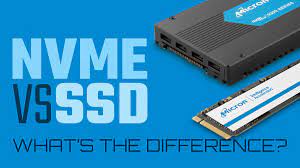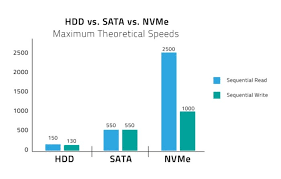
SSD (Solid State Drive) and NVMe (Non-Volatile Memory Express) are both types of storage technology that are commonly used in web hosting environments. However, there are some key differences between the two.
SSDs use NAND-based flash memory to store data, and they connect to a computer or server through a variety of interfaces, such as SATA, SAS, or PCIe. SSDs have been around for many years and have become a popular choice for web hosting environments because they offer faster read and write speeds, lower latency, and improved reliability compared to traditional hard disk drives (HDDs).

What is NVme ?
NVMe, on the other hand, is a high-performance storage interface that is specifically designed to take advantage of the low latency and high bandwidth of SSDs. NVMe is a protocol that allows SSDs to communicate with a computer’s CPU and memory more directly, which can result in even faster access to data compared to other SSD interfaces like SATA or SAS. NVMe can provide significantly higher read and write speeds, lower latency, and higher IOPS (Input/Output Operations per Second) compared to traditional SSDs.
Conclusion : SSDs are a popular choice for web hosting environments because they offer faster performance and improved reliability compared to HDDs. NVMe, on the other hand, is a newer and higher-performing storage interface that can offer even faster performance than traditional SSDs, but at a higher cost. NVMe is generally recommended for workloads that require high-performance storage, such as databases, high-traffic websites, and data analytics applications its more of a premium web hosting feature.